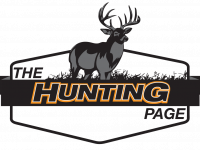When the snow finally recedes across many parts of the country, many outdoors people tend to focus on angling. However, if you are a whitetail hunter who really wants to get a jump on the season, there is no better time than spring to get in some valuable scouting. There are many reasons for that, including the lack of leaves and plants that can quickly obscure a lot of great information, making the woods very transparent and easy to read. Here is a rundown on what to look for when spring whitetail scouting.
Sheds Tell A Story
Naturally, the best places to look for sheds are areas where bucks concentrate during that time of year: feeding, bedding and travel areas. If I find shed antlers on bucks I have a history with and determine that it’s in a spot that the deer is likely to use in the autumn, too, you’d better believe I’ve located a prime stand location! To scout productively and efficiently, you should be looking for several things at once. You’re looking for sheds, sure, but you’re also looking at a current travel sign, trying to determine if it’s likely to match travel patterns of the fall. I find it usually does, though there are changing factors— especially with regard to food sources and hunting pressure — that can alter these. You’re also looking for last fall’s buck signs. Last fall’s rubs and scrapes should still be quite obvious and their location will help you discern probable patterns for pre-rut and peak-rut activity. Pay particular attention to rub lines, as they are often used in October and early November, as well as hood size scrapes that were used by many bucks the previous fall, which will be a hub of concentration and activity this upcoming fall.
Trails
Deer trails are easy to see in the spring and look like well-worn highways. Yet as soon as the leaves pop out and grasses grow, the trails practically disappear. So get out there as soon as practically possible, and you can learn a ton about deer movement by following and mapping out trails. The trails will often be located between main feeding and bedding areas. Trails that intersect can also be perfect places to set up tree stands or ground blinds. Spring is both a good time to choose a tree to hang a stand in and then put it up. The less noise and disturbance made when whitetails are not immediately in the area, the better. Trails are also a great place to trim up and locate up a trail cam setups. Although the fall is still a long way off, a trail cam left to take pictures for a few weeks at a time will not only give you valuable MRI about how many animals are around, it will also show you the bucks, antler development, and travel habits. It’s amazing just how quickly a mature buck will start showing its headgear. Even in velvet, those antlers can’t help but get the red-blooded hunter excited for fall.
Take Advantage
Spring scouting for whitetails and the bonus tom gobbling in the distance is fun. It’s a good time to walk in the woods and read the landscape before foliage blooms and while visibility can sometimes be measured in the length of football fields rather than feet. Also, pesky black flies, mosquitoes, and deer flies have not yet hatched, and walks prove to be very enjoying and productive.

